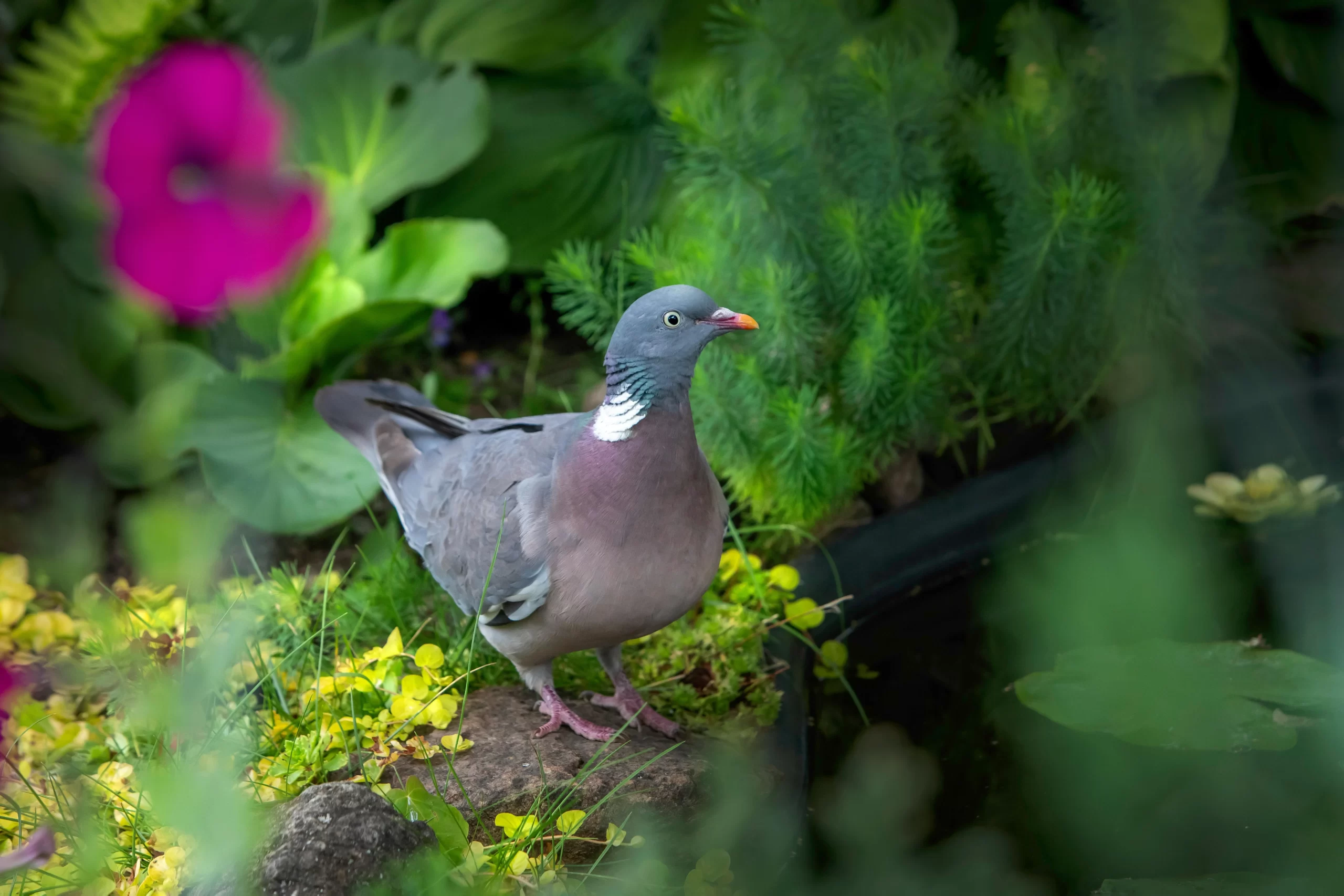Residents of the United Kingdom are doubtlessly familiar with doves. Indeed, it is almost a guarantee that a pigeon will be observed on a walk through a city, while collared-doves are regular sights in quiet towns and neighbourhoods. Though everyone in the UK has likely seen a dove, few are familiar with the diversity of doves that can be found here. For instance, did you know that there are 5 different types of doves in the UK?
It’s true! Fortunately, you’re in luck if you’re not familiar with the doves in the UK, as I’ve created this article to quickly help you learn. I will discuss the types of pigeons UK and types of doves UK in this article, but let’s first discuss the difference between pigeons and doves. Are doves and pigeons the same?
Table of Contents
Are Doves and Pigeons The Same?
Doves and pigeons undoubtedly share many of the same traits and mannerisms as one another, but it’s reasonable to wonder about the differences between them. After all, if they were the same, why wouldn’t they share the same name? So, are doves and pigeons the same?
No, doves are not necessarily pigeons, but all pigeons are doves. Allow me to explain; you see, pigeons and doves are both in the Columbiformes order – the order to which all doves belong. Therefore, any bird within this order is considered to be a dove, but not all birds in this order are considered to be pigeons.
A pigeon is a type of dove that generally has specific characteristics such as a stocky build and a square tail. This means that not all types of doves are pigeons, yet all types of pigeons are doves.
Got it? Great! We can now discuss the different types of doves UK.
Types of Doves UK
Rock Pigeon
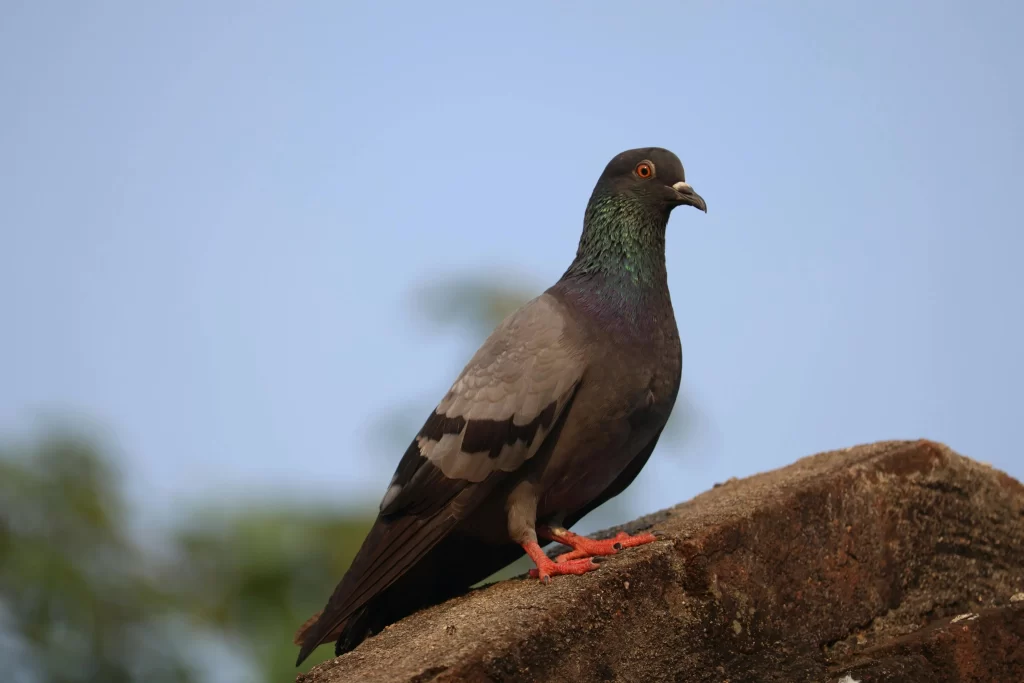
Identification
Rock Pigeons are birds that need no introduction, being the most familiar species of pigeon. They are thick-looking birds with square tails and heads that appear too small for their sizable bodies.
Both wild and feral Rock Pigeons reside in the United Kingdom, with wild birds having pale grey bodies, darker grey heads and necks, two dark wingbars, and iridescence on their necks. Feral birds may have these field marks, but they are also found in a variety of colours such as white, black, and brown.
Habitat and Range
It’s no secret that these types of pigeons (UK) are found in cities. However, the UK pigeons found here are typically feral Rock Pigeons. Wild birds—as their names suggest—are found away from urban areas in rocky locations such as cliffs and ledges.
These pigeons in UK have a wide distribution, being found throughout the United Kingdom. Generally, feral Rock Pigeons will be found in cities, while wild birds will be found in rural areas near cliffs. However, some believe that truly wild Rock Pigeons in the UK are nearly extinct, being found on only a few remote islands. Of course, their feral counterparts are ubiquitous in cities where they happily clean up scraps of food.
Abundance
Some may expect the Rock Pigeon to be the most widely reported of the doves in UK territories, however, this is not the case. Although Rock Pigeons have been reported on more than 340,000 eBird checklists, another UK dove is more commonly reported than the wild and feral pigeon types UK.
Stock Dove
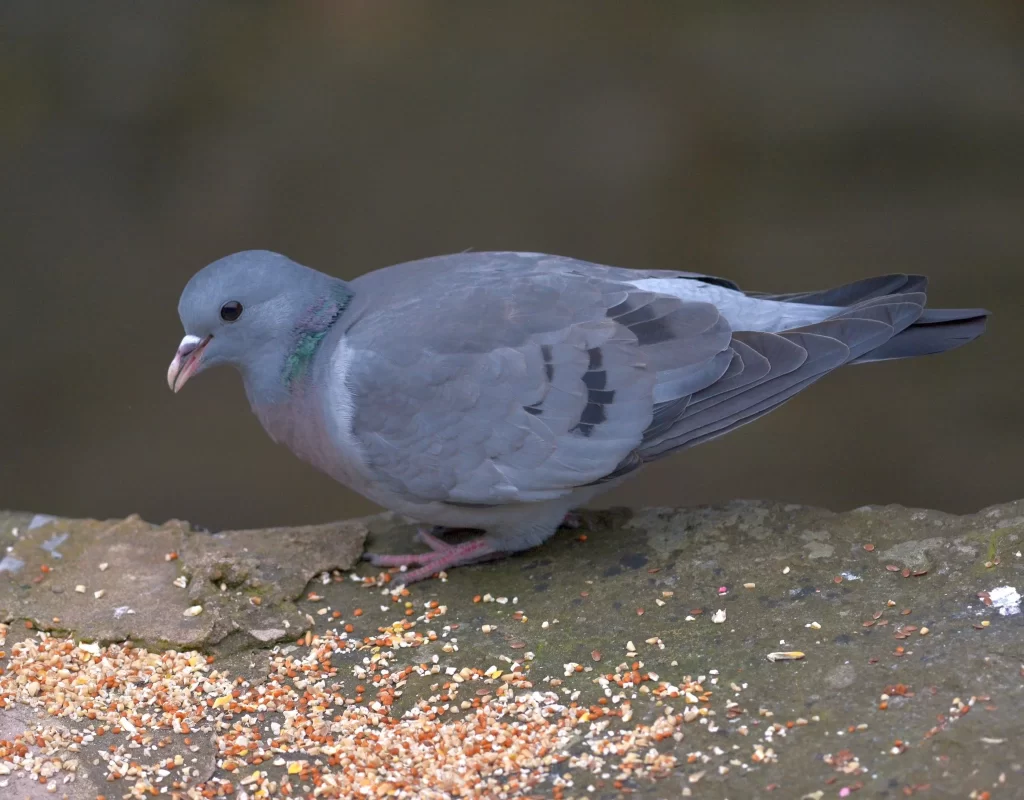
Identification
To the untrained eye, Stock Doves look rather similar to Rock Pigeons, as they have similar proportions. However, note that Stock Doves are largely a cohesive shade of grey with a pale bill and subtle dark wingbars. Like Rock Pigeons, these types of doves UK have irridescence on their necks.
Habitat and Range
These birds that look like pigeons are not typically found in urban areas, instead seeking farmsteads, windbreaks, open woodlands, and other semi-open locations with tree cover nearby.
These pigeons in UK are found throughout the United Kingdom, but they are increasingly less common as one travels further north.
Abundance
There has been no shortage of Stock Dove observations in the UK, as eBird data indicates that these UK doves have been reported on about 220,000 checklists from the United Kingdom.
Common Wood-Pigeon
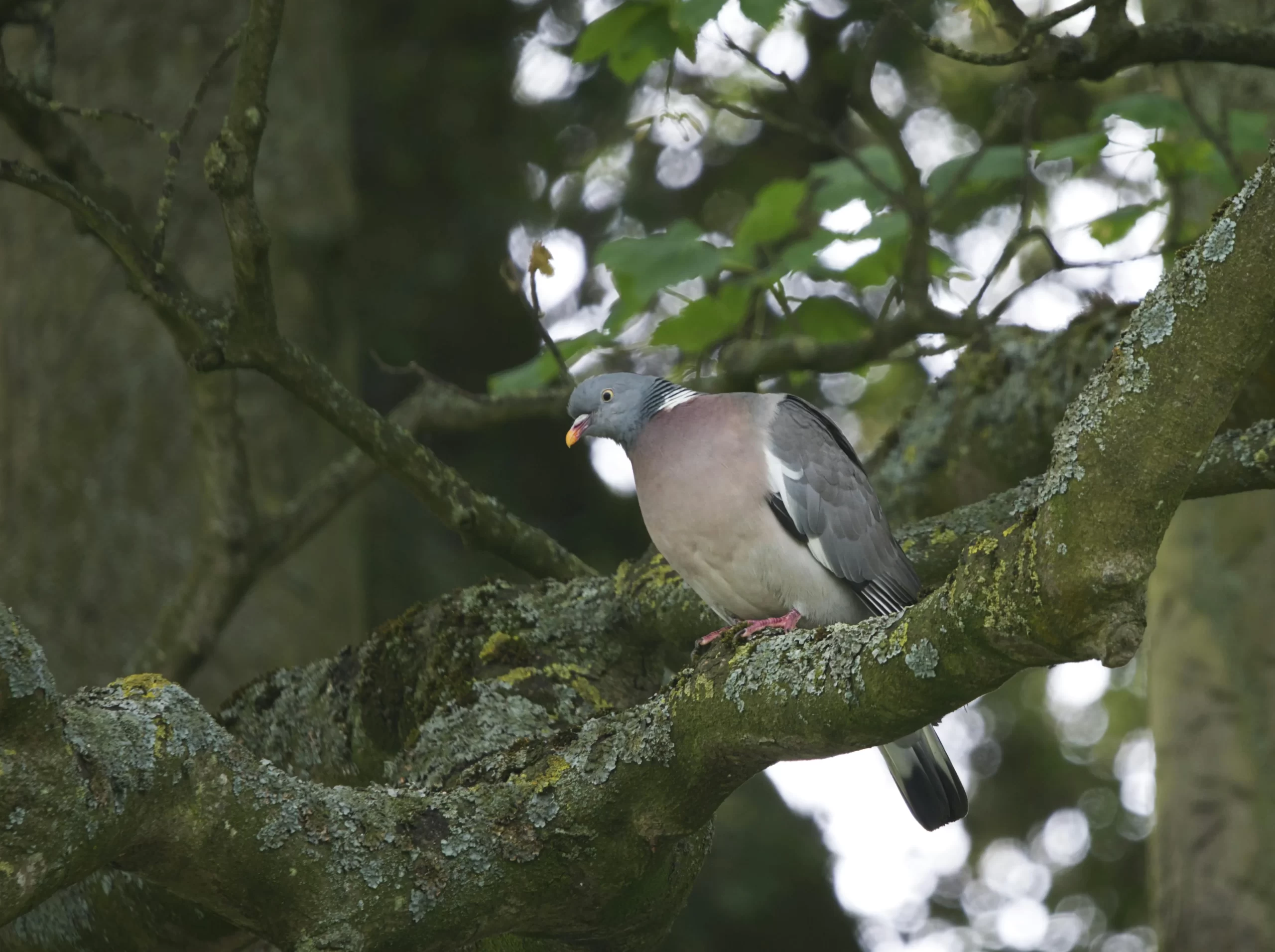
Identification
Common Wood-Pigeons are chunky UK pigeons that are largely gray overall. Unlike the other types of doves UK, Common Wood-Pigeons have pale eyes rather than dark eyes.
These types of pigeons in the UK have white leading edges to their wings and a distinctive white neck patch. Moreover, the ends of their tails have a dark tip.
Habitat and Range
Quiet towns throughout the UK often host substantial numbers of Common Wood-Pigeons. Here, they may be found in gardens, open woodlands, or hedges. Although they are easy to overlook, UK residents may notice these birds as they burst into flight after being chased by predators like sparrowhawks.
The entire United Kingdom is within the range of this type of pigeon.
Abundance
Common Wood-Pigeons claim as the most widely reported of the doves in the UK. Indeed, these types of pigeon (UK) have been reported on about 950,000 eBird checklists in the United Kingdom!
European Turtle-Dove
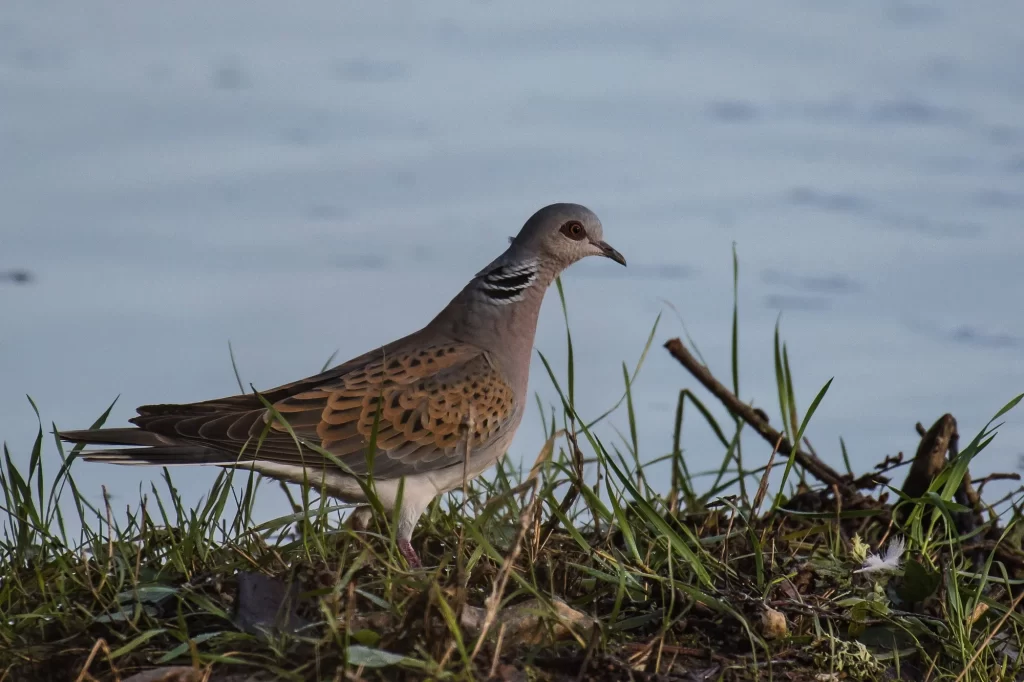
Identification
European Turtle-Doves sport builds that are slimmer than those of standard pigeons. Indeed, these attractive types of doves UK have greyish bodies with mottled brown and black wings. They’ve also got black and white frilled feathers on their necks, and many assert that they’re the most colourful UK dove species.
Habitat and Range
European Turtle-Doves seek open woodland and other semi-open habitats with sufficient tree cover. These UK doves may be found in agricultural landscapes or quiet towns with lots of hedges.
These types of dove have the most limited distribution of any dove within this article. Although they’ve been recorded throughout much of the UK, they only breed in select locations in eastern England.
Unlike other types of doves in UK territories, European Turtle-Doves are migratory, with these doves in England wintering in sub-Saharan Africa.
Abundance
Numbers of this species have declined precipitously in the last few decades, with evidence suggesting that their numbers have dropped by more than 90% since the mid-1990s. There have only been about 8,100 European Turtle-Dove observations submitted to eBird.
Eurasian Collared-Dove
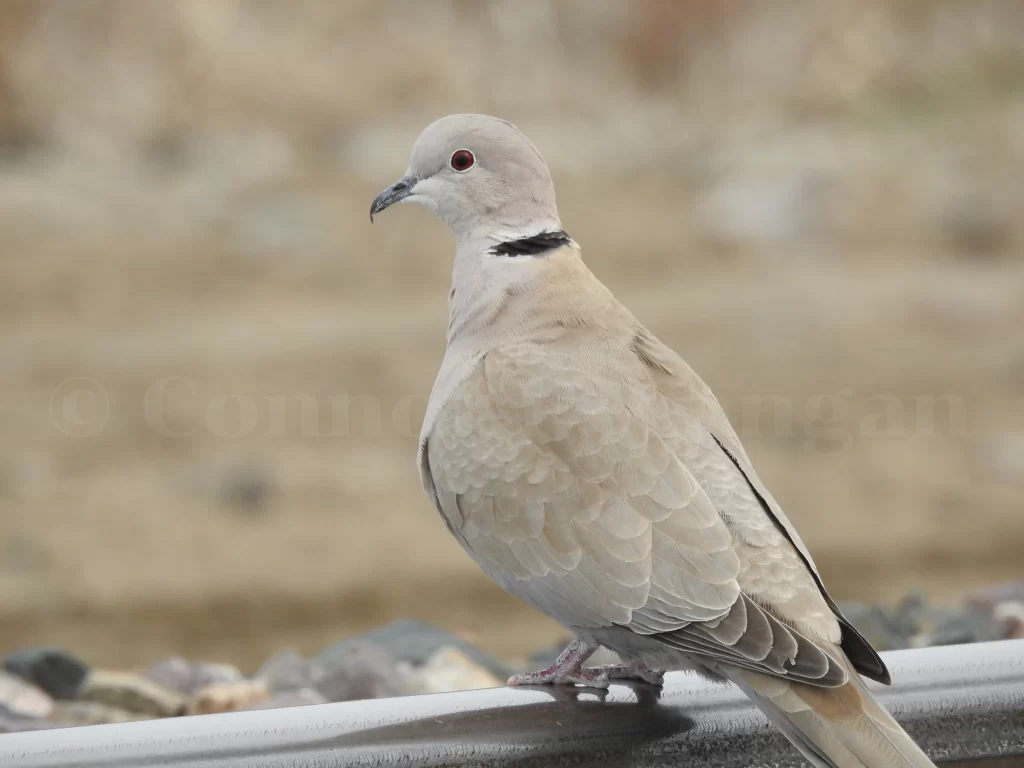
Identification
Eurasian Collared-Doves are sizable, square-tailed doves that are a pale greyish colour. They are readily identified by their namesake black collar on their necks, as none of the other types of doves and pigeons in the UK have this field mark.
Habitat and Range
The United Kingdom is full of optimal habitats for these UK doves, as they thrive on farmsteads and towns that have moderate tree cover.
These large types of doves are at home throughout the UK, being adaptable and able to readily survive in a variety of habitats.
Abundance
There is no shortage of Eurasian Collared-Doves in the UK, as more than 280,000 have been reported on eBird lists from the United Kingdom
Are Mourning Doves In The UK?
Mourning Doves are a familiar bird throughout North America, but many wonder if Mourning Doves nest in the UK. So, are Mourning Doves in the UK?
No, Mourning Doves are not an expected species in the United Kingdom. However, there have been 10 records of Mourning Doves observed in the UK submitted to eBird, with all records coming from Scotland.

